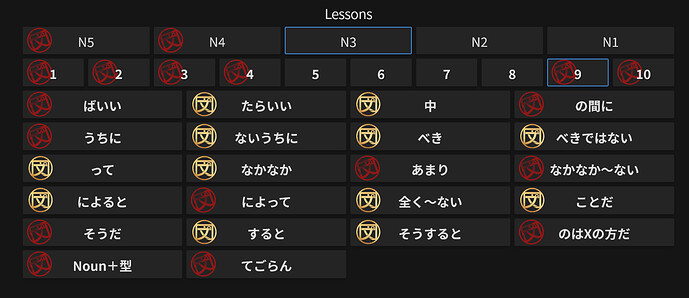Long time SRS user… was using Stackz on Windows & Windows Mobile (pre-iPhone) and moved my vocabulary lists to Flashcards Deluxe.
Bunpro is great because it helps take care of grammar examples - my weakest area.
I tend to make the same mistakes even with simple grammar points, and one possible reason is not having a firm grasp on the differences, nuances, or rules for each grammar concept.
In addition to grammar sentences, it might be beneficial to add several different approaches that emphasize the fundamentals of each grammar point as multiple choice.
This could be expressed in several different ways:
- True / False
- Pick the Most Appropriate
- Select why
True / False
Examples: (Correct answers are bolded)
- だ = to be, is
- です = to be, is
- だ cannot be used with い-adjectives
- だ can be used with い-adjectives
- True or False
Pick the Most Appropriate
Fill in the ______, which is the most appropriate?
_____寝坊したの?
- また
- だいたい
- ところが
- から
Fill in the ______, which is the most appropriate?
私は、___旅行に行くつもりです。
- そして
- だいたい
- ところが
- また
Select why
In the following example, why is grammar point most appropriate?
ここがいいだろう?
Definitions of the incorrect answers were pulled from かしら、ここ、も as a proof-of-concept.
- だろうExpresses that the speaker thinks that something is true (assertion/expectation), and also that the listener would probably agree with them.
- だろうis a standalone 終助詞 (sentence-ending particle) that works in a similar way to かも, by expressing the speaker’s uncertainty about the previous statement.
- だろう represents ‘this place’, or simply ‘here’.
- だろう can mean ‘too/also’, or ‘even’, or ‘neither/either’, depending on if the sentence is affirmative or negative.






